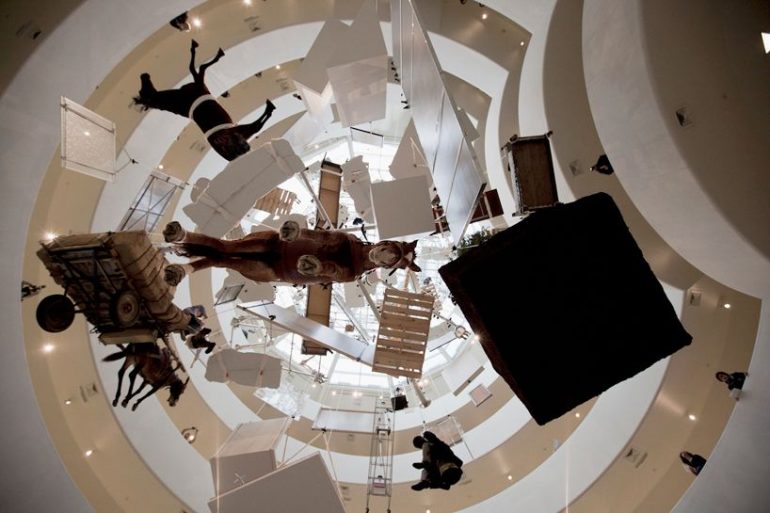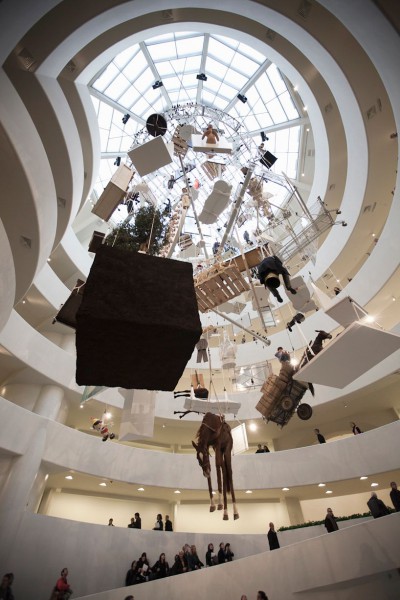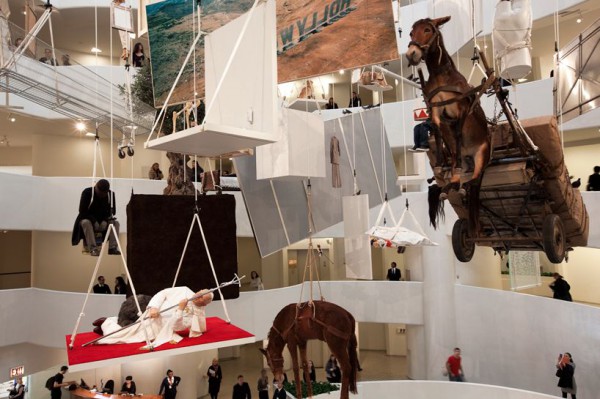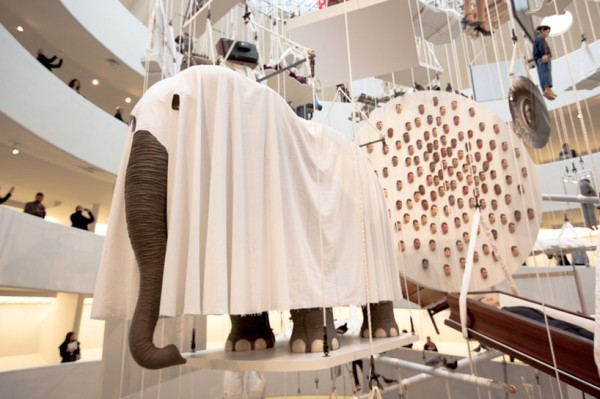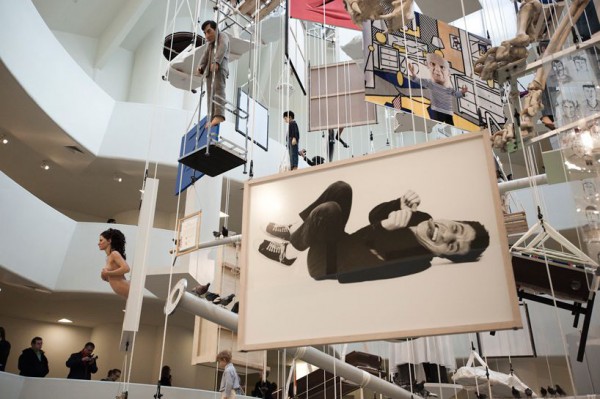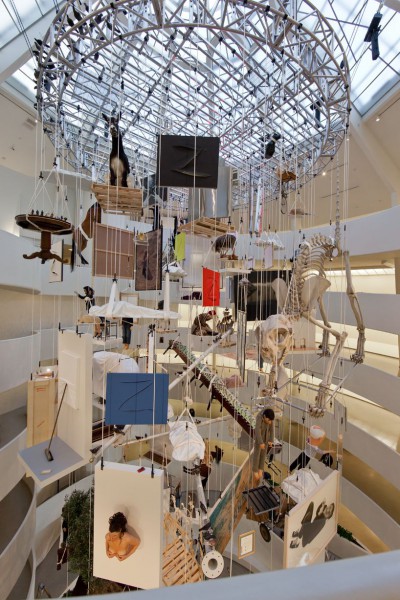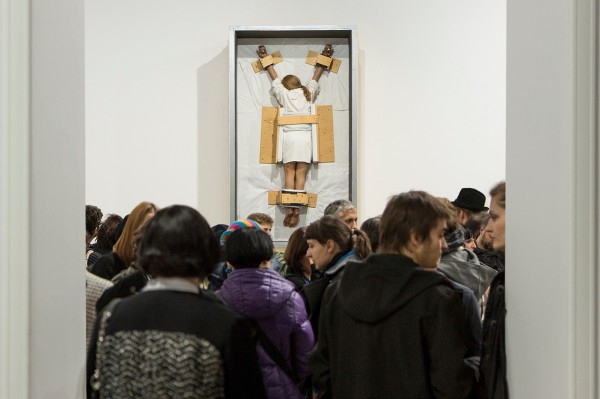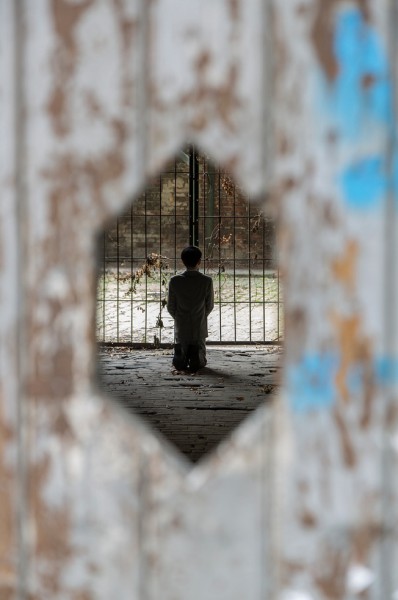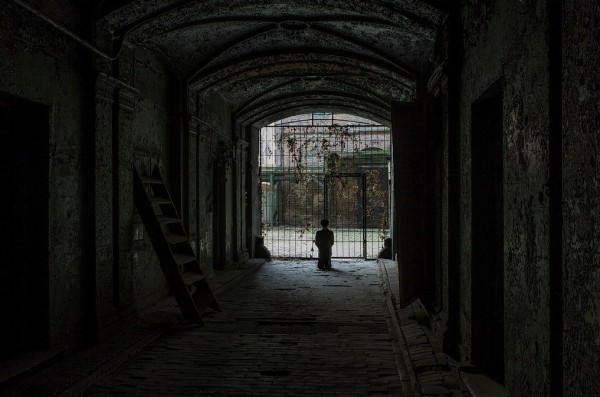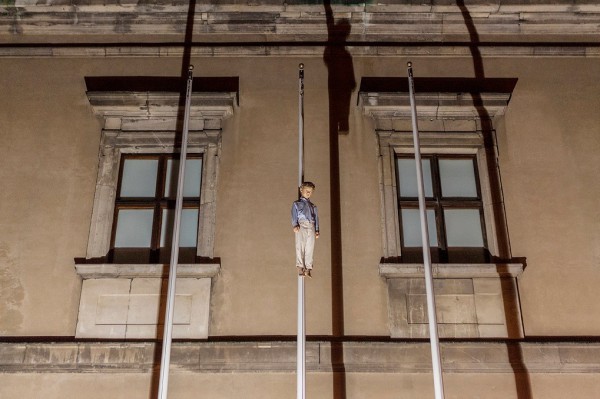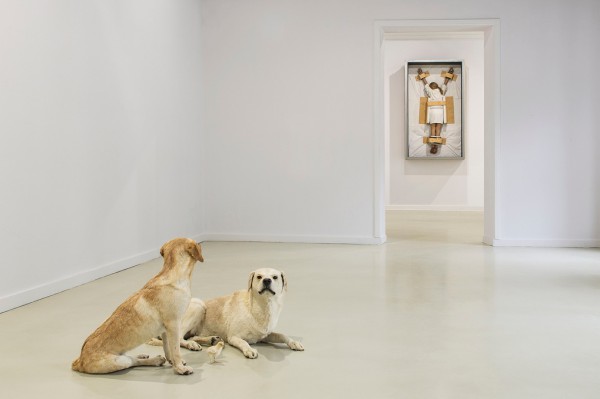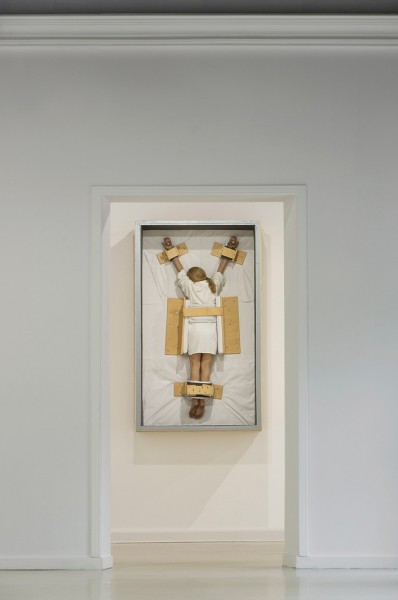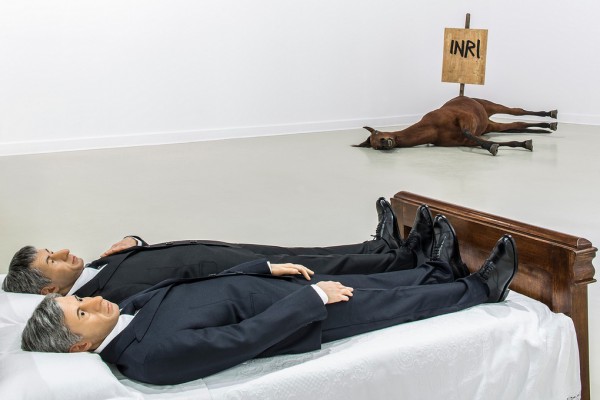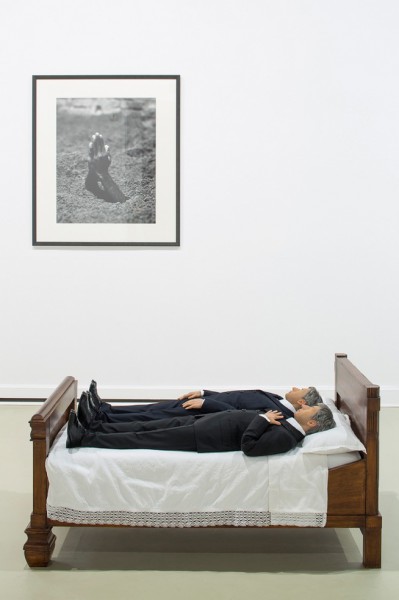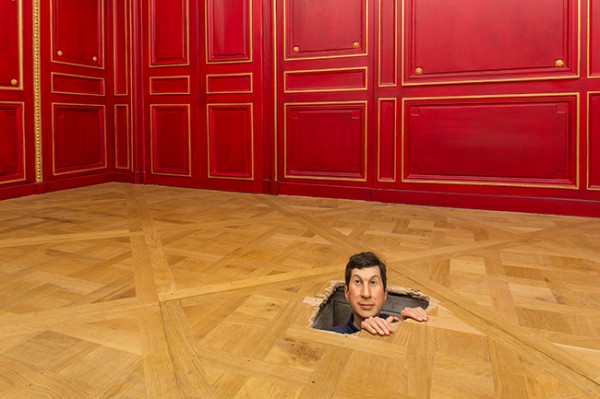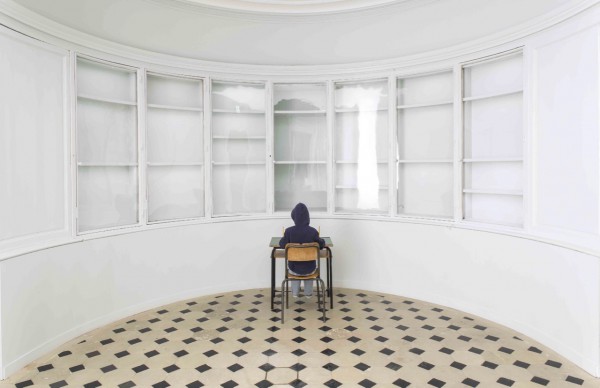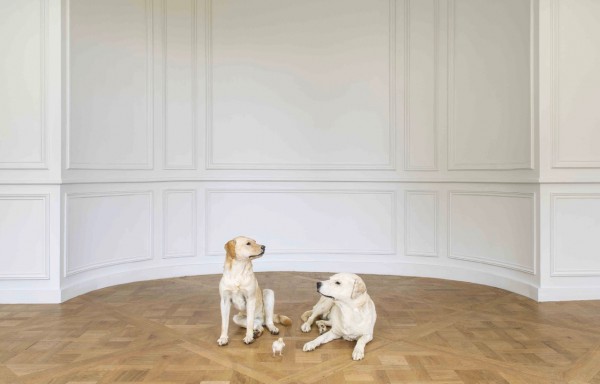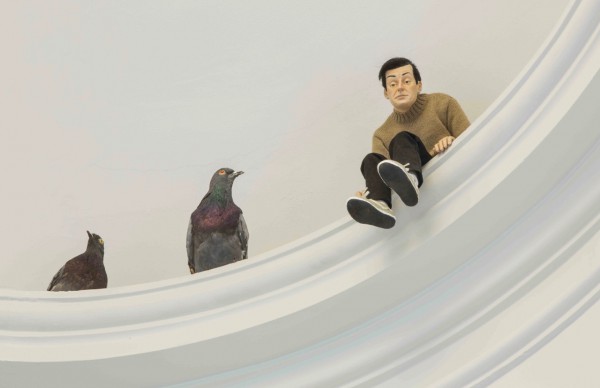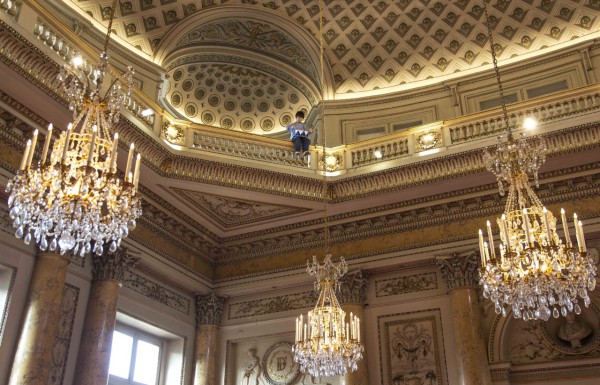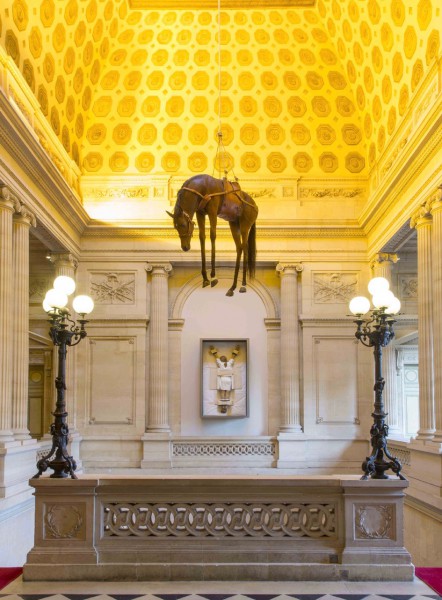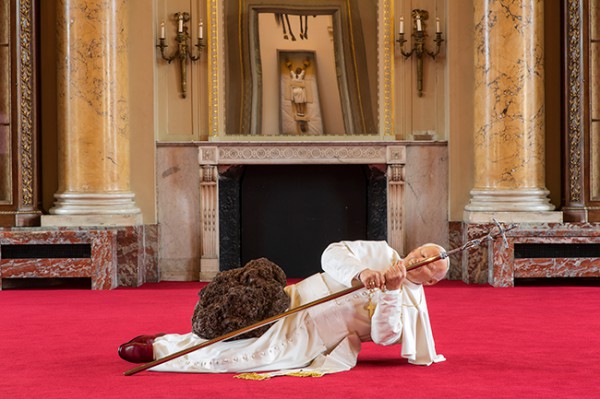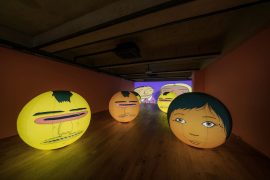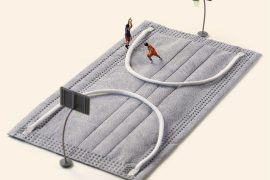At the end of 2011, on the can’t-be-missed retrospective “ALL” from Maurizo Cattelan at the Guggenheim in New York, one awe-inspiring installation featured virtually everything the artist had produced since 1989, all displayed dangling on ropes in a gravity-defying presentation the museum’s rotunda.
The Italian-born artist’s incendiary and provocative style, offered up in this inventive and fresh way, included his infamous satirical sculptural works referencing the pope, Adolf Hitler, John F. Kennedy, and more.
One year later, the always provocative contemporary artist Maurizio Cattelan was once again stirring up controversy, this time in relation to his show “AMEN” at the Centre for Contemporary Art in Warsaw. In addition to sculptural works for the museum, he had also placed a statue of Adolf Hitler praying on his knees in a former Jewish Ghetto where many Jews were killed or sent to their deaths by Hitler’s regime during the holocaust.
If you remember, this piece was seen in the the stunning suspended retrospective at the New York Guggenheim, but it is certainly more controversial in its new setting.
After five years, Not Afraid of Love at Monnaie de Paris was Maurizio Cattelan’s largest exhibition since his retrospective in New York. The controversial artist’s largest ever showing in Europe was also one of his most personal with the works chosen by himself that he considers most life-important and significant.
Cattelan further explained his comeback –
“This exhibition it’s the very first, after the Guggenheim show, that has more than three of my works altogether: it’s a special editing of things I’ve done before retiring. Let’s say it’s a post-requiem show, where, like in a Poe’s novel, I’m pretending to be dead, but I can still see and hear what happens around.”
Cattelan was born on 21 September 1960 in Padua, Italy. He started his career in the 1980s making wooden furniture in Forlì (Italy).
He created a sculpture of an ostrich with its head buried in the ground, wore a costume of a figurine with a giant head of Picasso, and affixed a Milanese gallerist to a wall with tape.
Cattelan’s personal art practice has gained him a reputation as an art scene’s joker. All his works have a humorous twist.
Maurizo Cattelan, Novecento, 1997
Cattelan is commonly noted for his use of taxidermy during the mid-1990s. Novecento (1997) consists of the taxidermied body of a former racehorse named Tiramisu, which hangs by a harness in an elongated, drooping posture. Another work utilizing taxidermy is Bidibidobidiboo (1996), a miniature depiction of a squirrel slumped over its kitchen table, a handgun at its feet.
Maurizo Cattelan, La Nona Ora, 1999
In 1999 he started making life-size wax effigies of various subjects, including himself. One of his best known sculptures, La Nona Ora (1999) consists of an effigy of Pope John Paul II in full ceremonial costume being crushed by a meteor.
Between 2005 and 2010 his work has largely centered on publishing and curating. Earlier projects in these fields have included the founding of “The Wrong Gallery”, a store window in New York City, in 2002 and its subsequent display within the collection of the Tate Modern from 2005 to 2007; collaborations on the publications Permanent Food, 1996–2007 – with Dominique Gonzalez Foerster and Paola Manfrin – and the slightly satirical arts journal Charley, 2002–present.
Cattelan’s art makes fun of various systems of order and he often utilizes themes and motifs from art of the past and other cultural sectors in order to get his point across. His work was often based on simple puns or subverts clichéd situations by, for example, substituting animals for people in sculptural tableaux. “Frequently morbidly fascinating, Cattelan’s humour sets his work above the visual pleasure one-liners,” wrote Carol Vogel of the New York Times.
All Images ©️ ZENZOTT, Monnaie de Paris
Discuss in Kanban. Scan the QR-code and join ArtThat Elites Club, then re-create with artists and take silk-screen handwork home!



